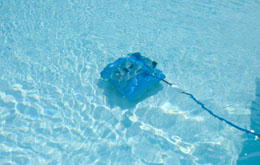pickoff move to first for right handed pitcher
Question
I have read and talked to many people, including umpires and a major league ball player, who tell me that you must do a jump pivot if you are a right handed pitcher throwing to first base to pick off the runner. They have all said that it is illegal to move your left(free) foot first without pivoting on your right foot. I decided to read the rules of MLB. I find zero mention of the so called pivot rule. In fact, the way the rule is written, it seems to me that it is a balk if you pivot on your right foot and then throw to first. It states that you only have to step with your left foot directly towards first base and then throw the ball. It says nothing about a pivot with your right foot. I watched David Eckstien get picked off in the NLCS and all the pitcher did was step directly to first base with his left foot from the set position. His right foot never moved and it never left the rubber. This is the exact move I used when I pitched. Why would this be illegal according to the rules of MLB. I cannot see it. Please help
Answer
Rob -
Ok buddy. Here ya go. I think you are maybe confusing a few things. So I will go over the basic rules, and what each pitcher can and cant do. I think it will straighten out any confusion you might have.
OK, the first rule that comes into play is a balk. What is a balk? It is when a pitcher does ANYTHING to give a baserunner the appearance that he is going to pitch the ball, then does not do so. Remember that as we go on.
The rules are different for a right and left handed pitcher going to bases, depending on the base. Here is a breakdown of the rules for each
A right handed pitcher has his back to first base, so he can not just step to first. That is impossible. If he stepped it would have to be to third. So when a RHP wants to throw to first base, he MUST step off the rubber FIRST. That is where the pivot comes into play. His right leg MUSt step off of the rubber before he can throw the ball. In the majors, it is done so fast it looks like they are just doing a jump pivot. There are 2 options going to 2nd base. A pitcher can either step off with his right foot then spin around and throw, or he can stay on the rubber and swing his left leg up and around to face 2nd base and throw. A RHP to third, he can just step to the base, AS LONG AS HE DOESNT LET HIS LEFT LEG GO TOWARDS HOME PLATE during the process. That would immitate a pitch and would be a balk.
A LHP is the same, but to opposite side of the field. To throw to first, he can just step that way without stepping off of the rubber. To second, same a a RHP, and third, he must step off the rubber prior to throwing.
Once a pitcher is set and stops moving (on the rubber) he must either throw a pitch or do a pick off move. IF there is a man on first and a RHP, the pitcher CANNOT move his left foot and not throw home. Balk.
I know it sounds complicated, but it really isnt. Its a tough thing to learn watching MLB because EVERY LHP balks when throwing to first base. They just do not call it often. But they do. Just remember the basic rules here and you will get it.
RHP to
1st - Must step off the rubber with right leg first
2nd - Either step off with right foot then pivot, or can swing front leg around body and throw to base
3rd - Can step directly towards the base if he hasnt started his left leg towards home.
LHP to
1st - Can step directly to the base if he hasnt started his front leg towards home
2nd - Either step off the rubber with left leg and pivot, or swing front leg around body and throw
3rd - Must step off rubber with left leg first before throwing to the base.
Ther is one situation that confuses people. A RHP with a man on 1st and third. The pitcher steps directly to 3rd, then pivots and throws to first. Well, this follows the same rules as above. His step to third is legal, because the rule says that is a step off for a RHP with a man on third, so once he does it, he is off the rubber and can throw to any other base. Same for a LHP stepping to 1st then throwing to third. But you can only do this when there are runners on each base (1st and 3rd).
Next time you sit and watch a game, use this response and you will see it all in action. It is very easy to get now that you know the rules. It all makes a lot of sense just in the physical possibilites. Let me know if you have anymore questions on the subject. And I can promise you that you confused the play with Eckstien a bit. And even might have confused what you did as a player. These rules are the same from little league to MLB. They NEVER change no matter the level of play.
Best wishes
Coach Perl
9-10 year old mustang practice
Pitching technique 10-11 yr olds


